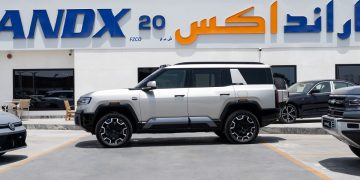The braking system is one of the most critical safety features in a vehicle, and modern vehicles are equipped with advanced technologies designed to enhance braking performance and safety. Two of the most commonly integrated braking technologies are ABS (Anti-lock Braking System) and EBD (Electronic Brakeforce Distribution). Both of these systems work together to improve vehicle control during braking, but they serve distinct purposes. Understanding the differences between ABS and EBD, and how they work to enhance braking performance, is important for every driver.
1. What is ABS (Anti-lock Braking System)?
ABS, or Anti-lock Braking System, is a technology designed to prevent the wheels from locking up during hard braking. When a driver applies the brakes forcefully, there’s a risk that the wheels will stop rotating altogether, leading to loss of traction. This can cause the car to skid, which compromises the ability to steer and increases stopping distances. ABS helps to avoid this situation by automatically modulating the braking force to maintain optimal wheel rotation and traction.
How ABS Works:
ABS uses a set of sensors placed on each wheel to monitor wheel speed. When the system detects that a wheel is about to lock up (i.e., its speed is significantly lower than the others), it rapidly applies and releases the brake pressure on that wheel, preventing it from locking. This process is called pulsing or pumping, and it helps maintain the wheels’ traction on the road.
- Sensors detect the speed of each wheel.
- Hydraulic Valves control the brake pressure applied to each wheel.
- Control Module processes the data from the sensors and controls the braking force accordingly.
The ABS system is most useful in slippery or emergency braking situations, such as on wet, icy, or gravel roads. By keeping the wheels from locking up, ABS allows the driver to maintain steering control and helps to reduce the likelihood of a skid.
Benefits of ABS:
- Maintains steering control during hard braking.
- Reduces the risk of skidding and loss of vehicle control.
- Improves stopping distances on low-traction surfaces, especially on wet or icy roads.
- Enhances safety by helping prevent accidents caused by loss of control.
2. What is EBD (Electronic Brakeforce Distribution)?
EBD, or Electronic Brakeforce Distribution, is another advanced technology used in modern braking systems. EBD works in conjunction with the ABS and is designed to optimize brake force distribution across all four wheels of the vehicle, depending on the load and driving conditions. EBD automatically adjusts the braking force applied to each wheel based on factors like the vehicle’s load distribution and road conditions.
How EBD Works:
EBD uses the data from ABS sensors and other vehicle systems to determine how much brake force is needed on each wheel. For instance, if the vehicle is heavily loaded in the rear, EBD will direct more braking force to the rear wheels, ensuring the vehicle stops in a balanced and controlled manner. If the vehicle is lightly loaded, the brake force will be distributed more evenly across all wheels.
- Sensors detect the weight distribution of the vehicle, especially when carrying passengers or cargo.
- Control Module calculates the optimal brake force distribution for each wheel based on this weight information.
- Hydraulic System adjusts the brake pressure to achieve the desired braking force on each wheel.
EBD is most effective in maintaining stability during braking, particularly when the car is under varying loads, such as during heavy braking with passengers or cargo in the back. It optimizes braking efficiency, reduces the risk of rear-wheel lift or front-wheel lockup, and improves overall braking performance.
Benefits of EBD:
- Improves braking efficiency by adjusting brake force for different loads and conditions.
- Reduces the risk of brake imbalance between the front and rear wheels.
- Enhances stability and control under various load conditions, such as when carrying passengers or cargo.
- Works in conjunction with ABS to improve overall braking performance.

3. Differences Between ABS and EBD
While ABS and EBD are both critical components of modern braking systems, they serve different functions:
| Feature | ABS (Anti-lock Braking System) | EBD (Electronic Brakeforce Distribution) |
|---|---|---|
| Purpose | Prevents wheel lock-up during hard braking | Optimizes brake force distribution across all wheels based on load |
| Primary Function | Maintains traction and steering control during braking | Adjusts braking force to balance load and improve braking efficiency |
| Key Technology | Monitors wheel speed and modulates brake pressure | Monitors weight distribution and adjusts brake force accordingly |
| Focus | Prevents skidding and loss of control | Ensures balanced and efficient braking performance under different loads |
| Typical Scenario of Use | Emergency braking on slippery or low-traction surfaces | Carrying heavy loads, driving on uneven or rough terrain |
| Direct Impact on Steering | Helps maintain steering control by preventing wheel lock-up | No direct effect on steering, but improves vehicle stability during braking |
| Interaction with ABS | ABS works independently, engaging when wheel lock-up is detected | EBD works alongside ABS, adjusting brake force for optimal performance |
4. How Do ABS and EBD Improve Braking Performance?
Together, ABS and EBD create a safer and more efficient braking system by addressing different aspects of braking:
a. ABS Improves Braking Control:
- ABS prevents the wheels from locking up, which is particularly useful during sudden, hard braking. This allows the driver to maintain steering control, reducing the risk of skidding or veering off the road.
- The ability to steer while braking on slippery or uneven surfaces enhances overall vehicle stability.
b. EBD Enhances Braking Efficiency and Stability:
- EBD ensures that the correct amount of brake force is applied to each wheel based on the weight distribution of the car. This helps prevent issues like excessive brake force on the front wheels or under-braking on the rear wheels, which can cause the car to become unstable.
- When the car is fully loaded with passengers or cargo, EBD adjusts the braking force to prevent rear-wheel lock-up and improve overall stability. On the other hand, in lighter conditions, EBD ensures that the car is stopping as efficiently as possible.
c. Combined Effect of ABS and EBD:
- When both systems are present, ABS and EBD work together to maximize braking performance. ABS ensures that the wheels don’t lock up during hard braking, while EBD optimizes brake force distribution to maintain vehicle balance and stability.
- For example, when driving a fully loaded vehicle, ABS will prevent the wheels from locking during hard braking, while EBD will adjust the braking force to ensure the car stops in a stable manner, even if the load is unevenly distributed.
5. Real-World Scenarios Where ABS and EBD Make a Difference
- On Wet or Icy Roads: ABS ensures that the wheels don’t lock up when braking on wet or icy surfaces, allowing the driver to maintain steering control. EBD works by adjusting the brake force to the rear wheels, ensuring that the car stops evenly without the rear wheels skidding or losing traction.
- When Carrying Heavy Loads: If you’re carrying cargo or driving with passengers in the back seat, EBD adjusts the brake force to ensure that the rear wheels receive enough braking power to prevent the car from becoming unstable or tipping forward.
- Emergency Braking: In a situation where you need to stop suddenly (such as avoiding an obstacle), ABS allows you to brake hard without losing control, while EBD optimizes the distribution of braking power to ensure the car remains balanced and stable.
6. Conclusion
Both ABS and EBD are vital technologies that significantly improve the overall braking performance and safety of modern vehicles. While ABS focuses on preventing wheel lock-up and maintaining steering control during emergency braking, EBD ensures that brake force is distributed appropriately across all wheels based on the load, optimizing braking efficiency and vehicle stability.
In combination, ABS and EBD create a powerful braking system that enhances both safety and performance. Drivers can rely on these systems to ensure that they maintain control of their vehicles, even under challenging conditions such as slippery roads or heavy loads. As part of an advanced braking system, these technologies are an essential part of modern automotive safety features.


































Discussion about this post